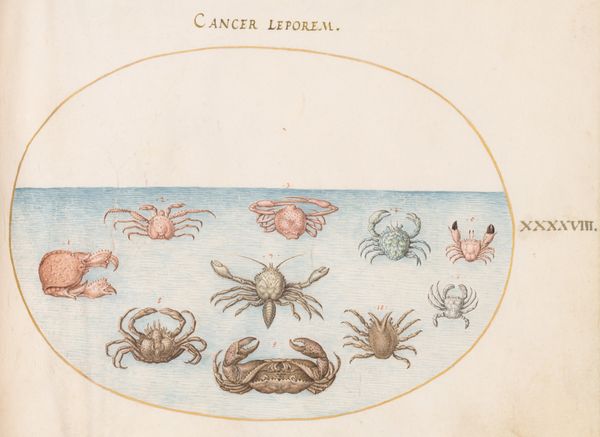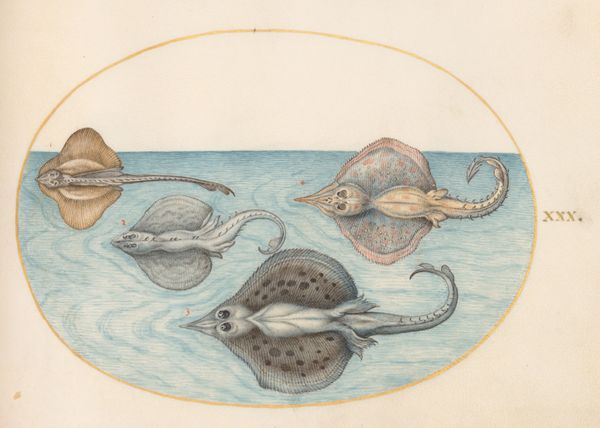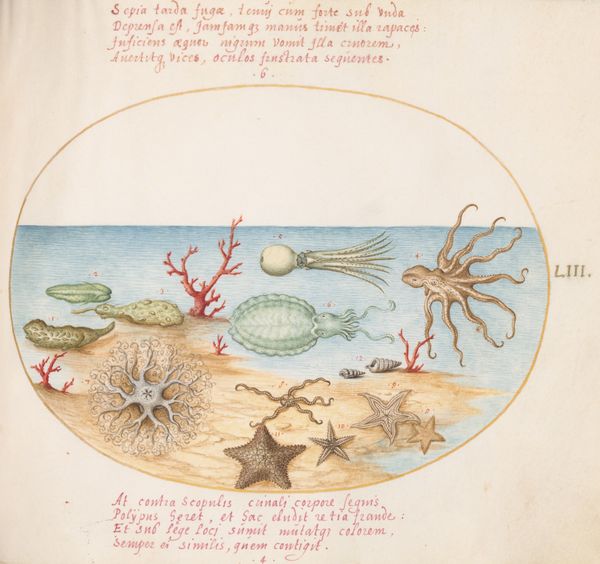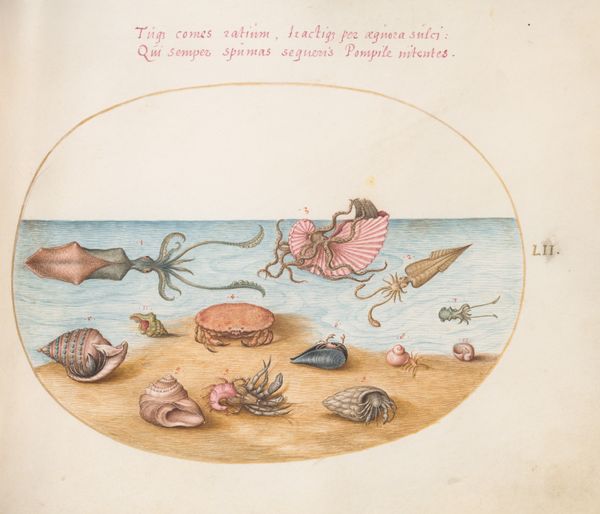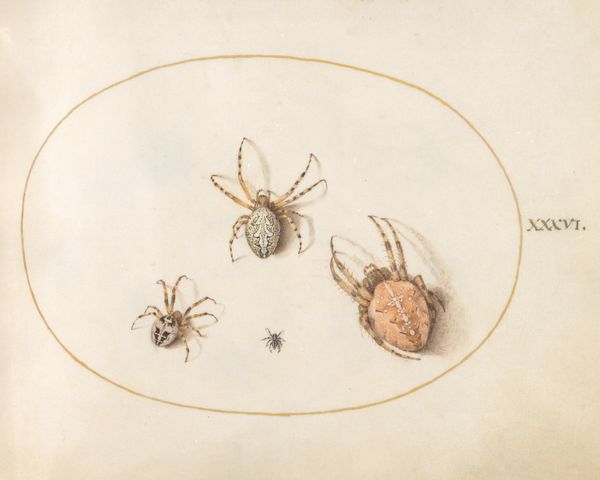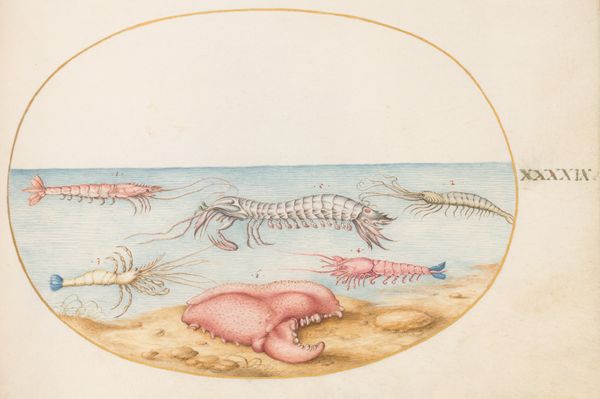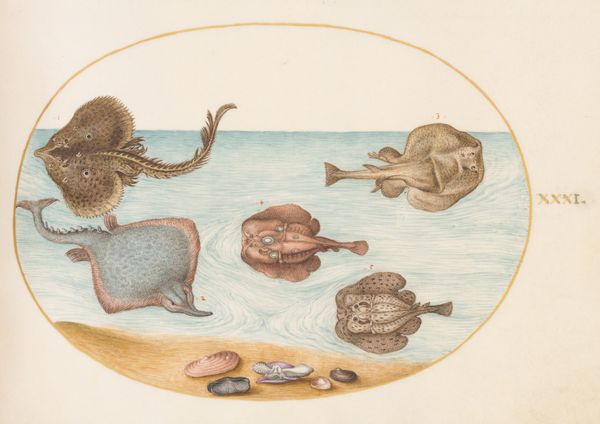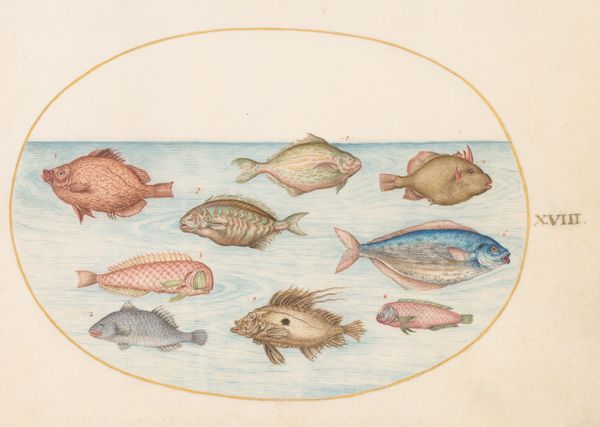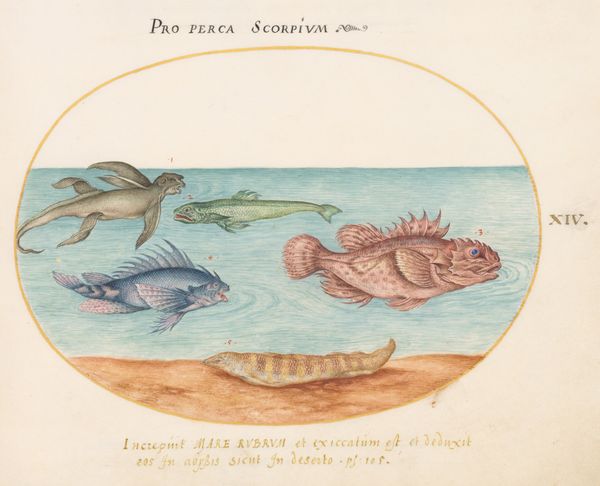
drawing, coloured-pencil, watercolor
#
drawing
#
coloured-pencil
#
water colours
#
mannerism
#
11_renaissance
#
watercolor
#
coloured pencil
Dimensions: page size (approximate): 14.3 x 18.4 cm (5 5/8 x 7 1/4 in.)
Copyright: National Gallery of Art: CC0 1.0
Joris Hoefnagel made this watercolor and gouache on paper image of nine crabs sometime in the late 16th century. Hoefnagel’s careful naturalism reflected the scientific curiosity of his time. Scholars were discovering and classifying the natural world, and this newfound knowledge was disseminated through detailed drawings. He worked for the Habsburg court, an institution that patronized the arts and sciences. The court also exerted political power, shaping the social conditions of the time. The visual codes in this image include the careful depiction of each crab's unique form. By portraying them in water, Hoefnagel places them in their natural habitat. These crabs could become specimens in a royal collection, displayed as symbols of power and knowledge. The art historian's role is to interpret these visual clues, researching the cultural and institutional contexts of the artwork. By consulting historical texts and scientific treatises, we can better understand the social meaning of images like Plate 47: Nine Crabs.
Comments
No comments
Be the first to comment and join the conversation on the ultimate creative platform.

